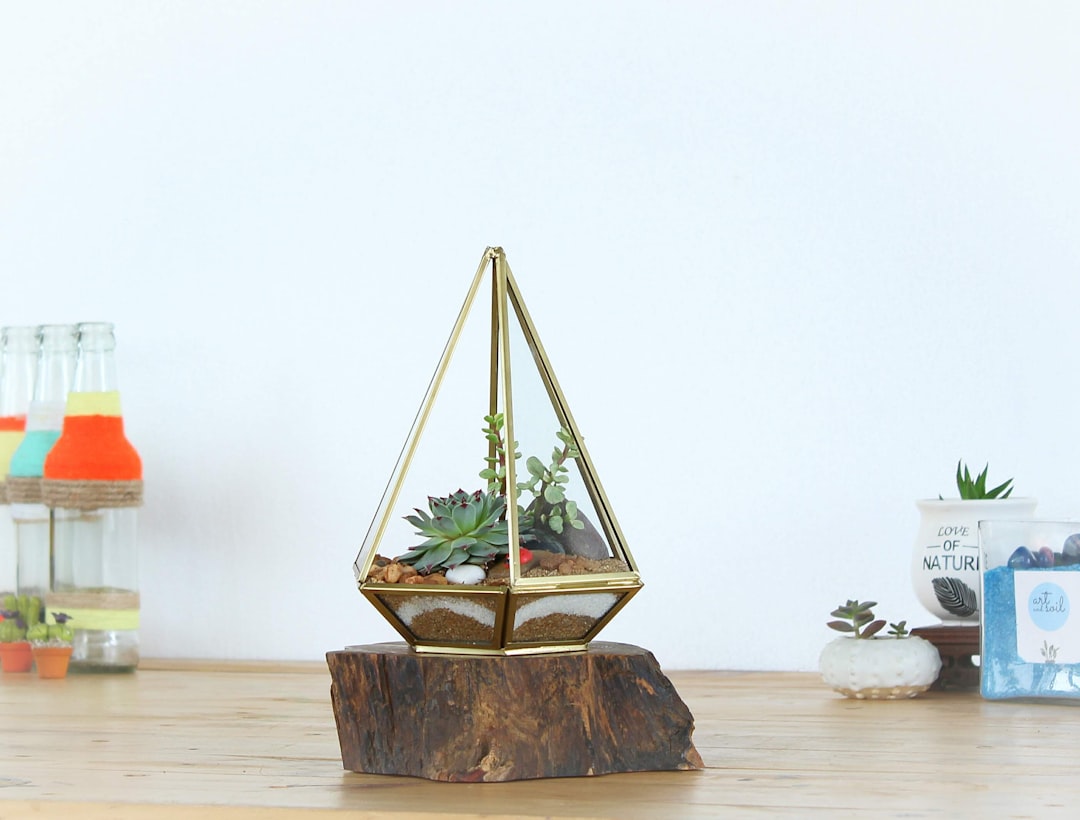Terrariums are a wonderful way to bring nature indoors, creating a self-sustaining miniature garden with minimal maintenance. Whether you're making an open terrarium for succulents or a closed one for tropical plants, the layering process remains essential for plant health. This step-by-step guide will walk you through building your own terrarium, ensuring a thriving ecosystem.
Materials Needed
Before you start, gather the following materials:
-
Glass Container: Open for dry plants (succulents/cacti), closed for humid plants (ferns/mosses).
-
Pebbles or Gravel: For drainage at the bottom.
-
Activated Charcoal: Prevents odor and mold buildup.
-
Potting Soil: Choose the right mix for your plant type.
-
Plants: Small, slow-growing species suited to your terrarium type.
-
Decorative Elements: Moss, stones, figurines, or bark for aesthetic appeal.
-
Tools: Tweezers, small shovel/spoon, spray bottle, and brush for easy assembly.
Step 1: Choosing the Right Container
Select a clear glass container that fits your style and plant needs:
-
Open Containers: Best for succulents, cacti, and air plants that prefer low humidity.
-
Closed Containers: Ideal for tropical plants, ferns, and moss, as they trap moisture and create a humid environment.
Step 2: Creating the Base Layers
Building proper layers is essential for drainage, aeration, and plant health.
-
Layer 1: Drainage Layer (Pebbles/Gravel)
-
Add a 1–2 inch layer of small pebbles or gravel at the bottom to allow excess water to drain and prevent root rot.
-
-
Layer 2: Activated Charcoal
-
Add a thin layer (½ inch) of activated charcoal to keep the terrarium fresh and prevent bacteria growth.
-
-
Layer 3: Potting Soil
-
Add 2–4 inches of the appropriate soil:
-
Succulents & Cacti: Well-draining, sandy soil.
-
Ferns & Mosses: Rich, organic potting mix.
-
Air Plants: No soil needed; they sit on top of decorative elements.
-
-
Step 3: Planting Your Terrarium
-
Plan Your Layout – Arrange plants before planting to visualize placement.
-
Dig Small Holes – Use a spoon or mini shovel to make space for the roots.
-
Plant Carefully – Use tweezers for delicate plants and pat down the soil gently.
-
Space Plants Properly – Leave room for growth and airflow.
Step 4: Adding Finishing Touches
-
Decorate with Moss, Stones, or Wood Pieces for a natural look.
-
Brush Off Excess Dirt using a soft brush to keep glass clean.
-
Lightly Mist (For Closed Terrariums) to maintain humidity without overwatering.
Step 5: Caring for Your Terrarium
Watering:
-
Closed Terrariums: Rarely need watering; mist only if dry.
-
Open Terrariums: Water succulents sparingly; soil should dry out between waterings.
Light Requirements:
-
Place in bright, indirect sunlight; avoid direct sun, which can overheat the glass.
Maintenance:
-
Trim overgrown plants and remove dead leaves.
-
Wipe glass for clarity and check for mold or excess moisture.
Start Your Miniature Garden Today!
With these simple steps, you can create a thriving terrarium that adds natural beauty to your space. Experiment with different plants, decorations, and container shapes to craft a unique miniature world. What will your terrarium look like?

Comments
No comments yet. Be the first to comment!
You must be logged in to comment. Login